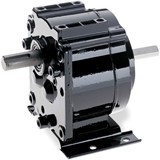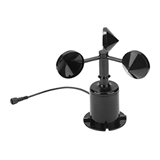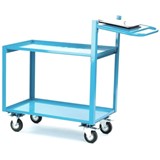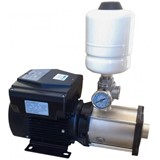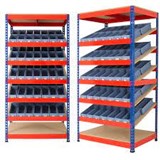The latest monthly business survey from the NAB makes it as clear as ever that the mining sector is leaving the rest of the economy behind.
Overall, though, the economy is just limping along.
Aside from a dip in January and February, when much of eastern Australia struggled against wild weather and floods, the NAB's index of business conditions in May was at its lowest ebb since early 2009, when the economy was still reeling from the shock of the global financial crisis.
The NAB's index of business conditions is based on measures of trading conditions, profitability and employment.
In May, all three were at, or near, their lowest levels - again, aside from the brief flood-affected interval - for two years.
But the performance between sectors is far from even.
The results of the survey could be summed up by this, from the NAB's commentary on the survey: "Conditions in retail, manufacturing, wholesale and construction are still very poor, while mining conditions outperformed all other industries".
It's a familiar story.
The negatives weighing on the economy make an impressive list - above-average interest rates, stagnant housing and share markets, tighter fiscal policy, reduced competitiveness from the high exchange rate, post-crisis caution among households and businesses, and belatedly tighter standards imposed by lenders, not to mention higher energy costs, Japan's tsunami-related woes and a rising tide of policy tightening in Asia.
Europe's debt crisis and China's inflated property market are waiting on the reserves bench in case they're needed.
But the consensus among economists is still that the effects of the mining boom will outweigh those negatives, even though the estimation of the timing of the recovery in Australia's economy varies.
Most economists expect at least one rise this year.
They're taking their cue from the repeated statements from the Reserve Bank of Australia (RBA) that a rate rise will be necessary as long as the economy behaves as expected.
In a note accompanying their survey results, the NAB's economists reiterated their forecast of two increases in the cash rate by the end of 2011.
Their view is hardly unusual among financial market economists.
The futures market is not as firmly convinced, putting the cash rate in November 2012 at just 4.9 per cent.
Given the RBA's propensity to adjust the cash rate in bites of a quarter of a percentage point, that suggests the chance of an increase in the next year and a half is barely above 50 per cent in the collective view of futures traders.
Given the divergent trends in the economy, neither the traders nor the economists can have much certainty, with abundant evidence to support just about any view, from bleak to rosy.
Time will tell who is right.



